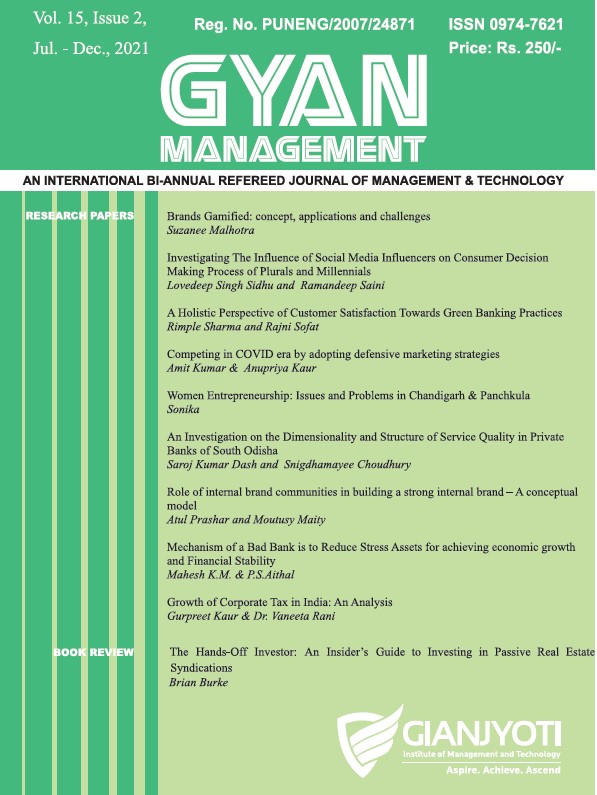Performance Evaluation of Indian Public Sector Banks: A CAMEL Model Analysis
Keywords:
Public Sector Banks, CAMEL model, Performance evaluation, Friedman rank testAbstract
A robust banking and financial sector is a prerequisite for developing and developed economies alike, as they provide the vital fuel for the engine of economic growth. The banking sector in India constitutes a predominant component of financial services industry and the performance of country is dependent on the performance of banks to a large extent. En India public sector banks account/or more than 70 percent of the banking business. The present study has been carried out to evaluate the performance of Indian public sector banks in the wake of increasing competition and to check the uniformity in the performance of these banks. For the present study all the Indian public sector banks have been taken, which includes 20 nationalized banks and 6 banks of State Bank group. In the study the secondary data has been used which has been collected from the reports of Reserve Bank of India covering the period from 2008 to 2012 and analyzed with the help of Friedman Rank test. ft has been found that different banks performed differently regarding different parameters of CAMEL model over the period of study and thus, it can be concluded that the performance of all public sector banks was not uniform across all parameters of CAMEL model. With the help of present study the banks will be able to know their performance level regarding different parameters of CAMEL Model and the low performing banks will initiate measures to improve their performance regarding different parameters.
Downloads
Downloads
Published
Issue
Section
License
Copyright (c) 2022 Subhash Chand , Satbir Singh

This work is licensed under a Creative Commons Attribution-NonCommercial-NoDerivatives 4.0 International License.



